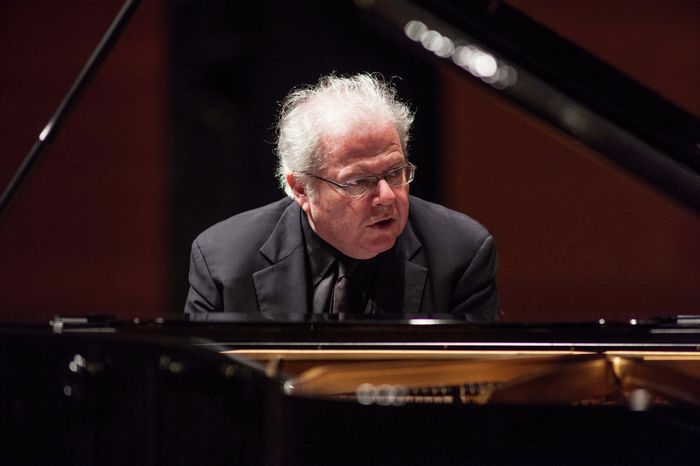Jan Lisiecki delivers a masterclass in the art of the prelude
Albert Koch left Lisiecki’s concert impressed by the depth of the pianist’s exploration of this curious musical genre

One year on from Jan Lisiecki’s spectacular performance of Chopin’s Études here in Cambridge, I couldn’t wait to hear him play again this Lent. As part of this season’s programme offered by the Camerata Musica, a Peterhouse society bringing chamber music to students, he made his comeback with an unusual set of pieces – he was only going to perform preludes. A prelude is meant to serve as a little introduction before a player starts the proper performance, and in its origin was usually improvised until composers started to write down set versions. So where was this evening of musical introductions going to lead? It turned out to be an eye-opening experience and a deep exploration of this somewhat curious genre, and of Frédéric Chopin in particular, whose complete set of twenty-four preludes made up the second half of the concert.
“Where was this evening of musical introductions going to lead?”
In fact, Lisiecki started the concert with a single piece of this set, the famous ‘Raindrop Prelude’, which was probably the first piece I have ever heard twice in a single classical concert. Lisiecki immediately enchanted the audience with the soft and contemplative melody, which soon turned into a mysterious and probing theme, growing louder and more dramatic until it quietened down and finally receded back into the sweet melody, while the same note was repeated insistently throughout the piece like rain dropping without end.
With this enrapturing opening, Lisiecki had us all longing for him to continue with the selection of preludes by different composers that formed the first half of the concert. Soon we were listening to Bach’s familiar ‘Prelude in C Major’ from ‘The Well-Tempered Clavier’. This evergreen piece was an essential item on the programme, since Bach famously explored the different technical challenges on the keyboard in the baroque period by writing a set of twenty-four preludes, one for each key, which inspired Chopin to do the same more than a hundred years later. Rachmaninov’s ‘Prelude in D Minor’ followed, which Lisiecki played with ravishing rhythmic intensity. However, I was a little unsure about this leap between totally different musical periods, and at this point almost felt stranded in a Spotify playlist of classical essentials on shuffle.
Luckily, Lisiecki quickly carried the audience off into the world of Polish composer Karol Szymanowski for three preludes in a row. These early works were still greatly influenced by the romantic period, and with their nostalgic sweetness Lisiecki soothed the audience into a phase of deep concentration. He smoothly transitioned into three further preludes by French composer Olivier Messiaen, which were more lively, fragmented, colourful and impressionistic. Yet everyone already anticipated the growling theme of Rachmaninov’s ‘Prelude in C-Sharp Minor’, which Lisiecki performed with thundering grandeur.
“Lisiecki performed with thundering grandeur”
When I was later sinking into the more modern soundscape of Górecki’s atonal and rhythmically intense preludes, I almost didn’t notice that Lisiecki started playing Bach’s ‘Prelude in C Minor’ as he spilled out the quick broken chords with the intensity of a sewing machine. It suddenly struck me how reminiscent Górecki’s pieces were of this baroque role model, and the music started to feel more cohesive than ever. With the same drive, Lisiecki delivered Rachmaninov’s march-like ‘Prelude in G Minor’ and ended the first half of the concert.
After the audience had journeyed through the concept of preludes as dense showpieces of melodic ideas, harmonic unfoldings and pianistic virtuosity developed over hundreds of years of musical history, Lisiecki displayed the same variety within the work of a single composer. Chopin’s preludes consist of overflowing harmonies, stern rhythms, melancholic themes, sparkling melodies and frenetic scales, in a succession of fragments which always leave the listener in want of more. After Lisiecki had finished the set with the trembling and dramatic twenty-fourth prelude and left the audience in awe, he asked the obvious question: “After all this preluding, what will there be at the end?”, and answered it himself: “Evidently, it is death.” Instead of death, however, he gave us a Romance by Schumann, providing an encore to a most extraordinary concert, made possible and delivered to students for free by the Camerata Musica Cambridge.
 News / Caius clock hand returned nearly 100 years after student prank31 March 2025
News / Caius clock hand returned nearly 100 years after student prank31 March 2025 News / Hundreds of jobs to be cut at Cambridge University Hospitals1 April 2025
News / Hundreds of jobs to be cut at Cambridge University Hospitals1 April 2025 Comment / More Cambridge students should study abroad 1 April 2025
Comment / More Cambridge students should study abroad 1 April 2025 Features / Cloudbusting: happy 10th birthday to the building you’ve never heard of30 March 2025
Features / Cloudbusting: happy 10th birthday to the building you’ve never heard of30 March 2025 Fashion / The Cambridge puffer: a debate 27 March 2025
Fashion / The Cambridge puffer: a debate 27 March 2025




